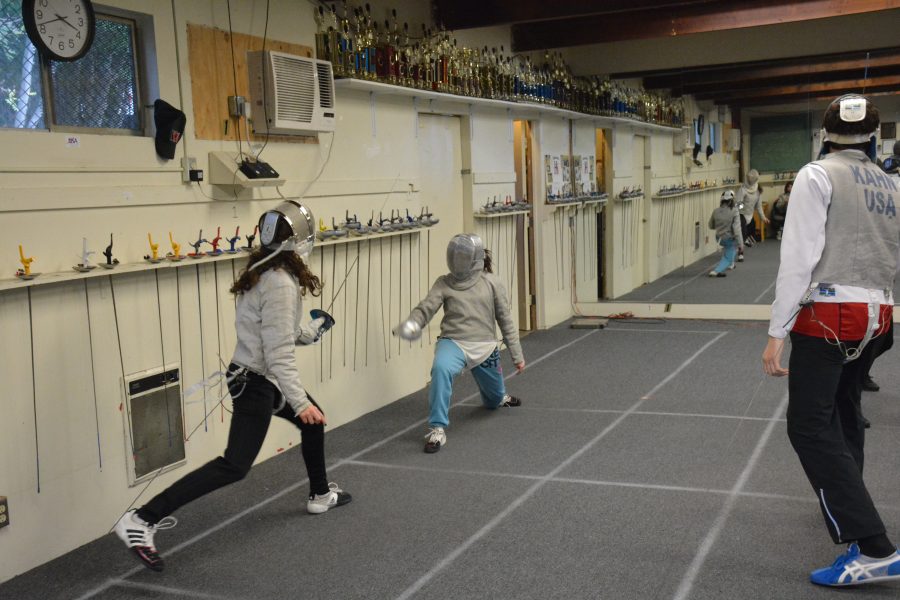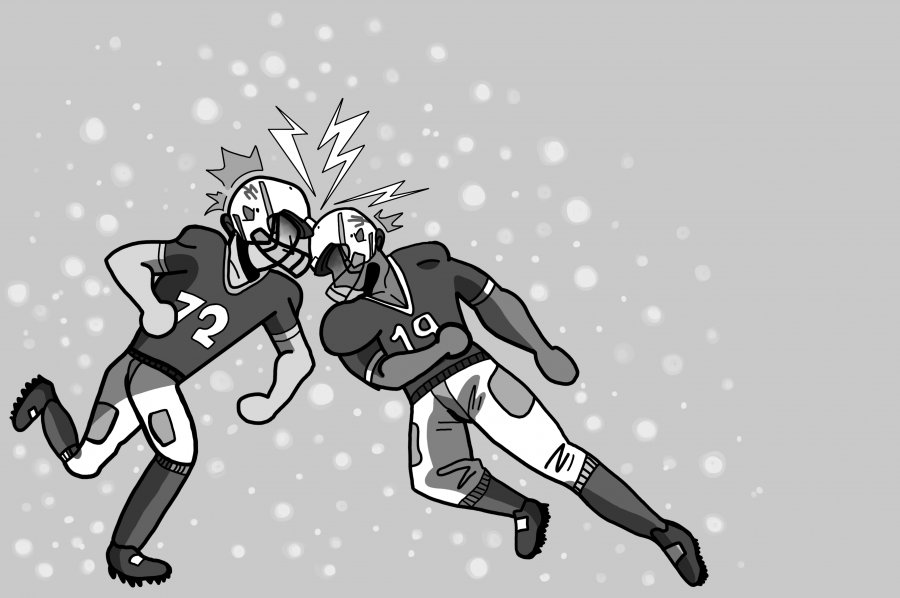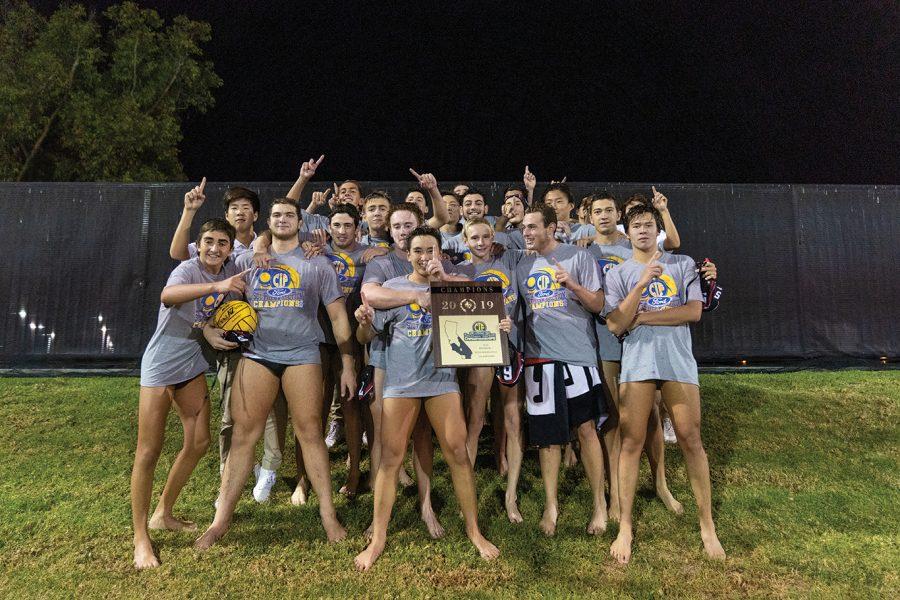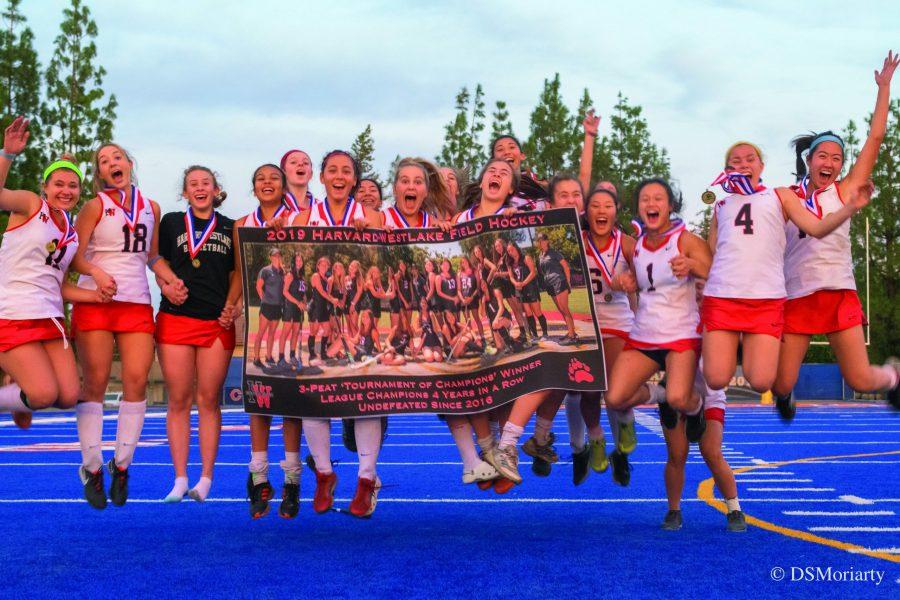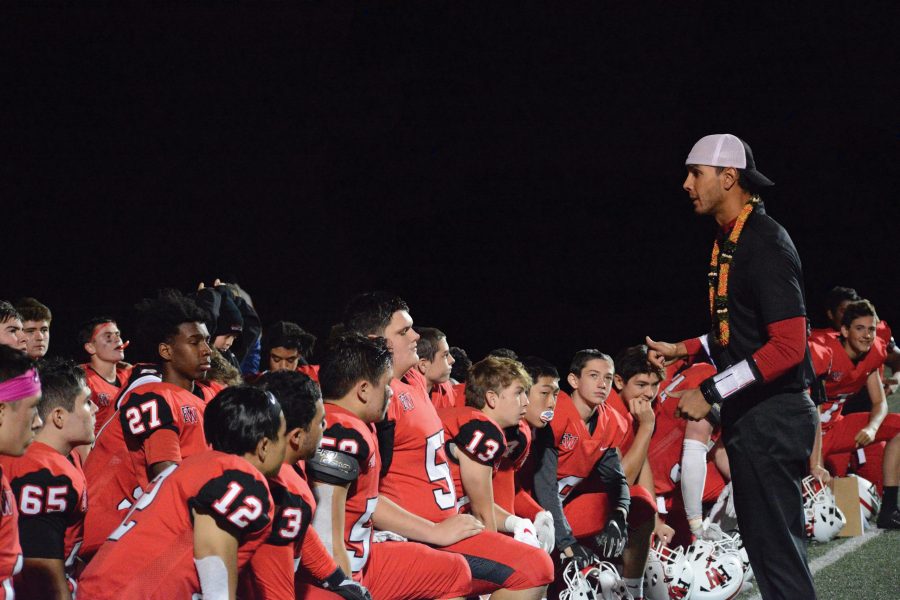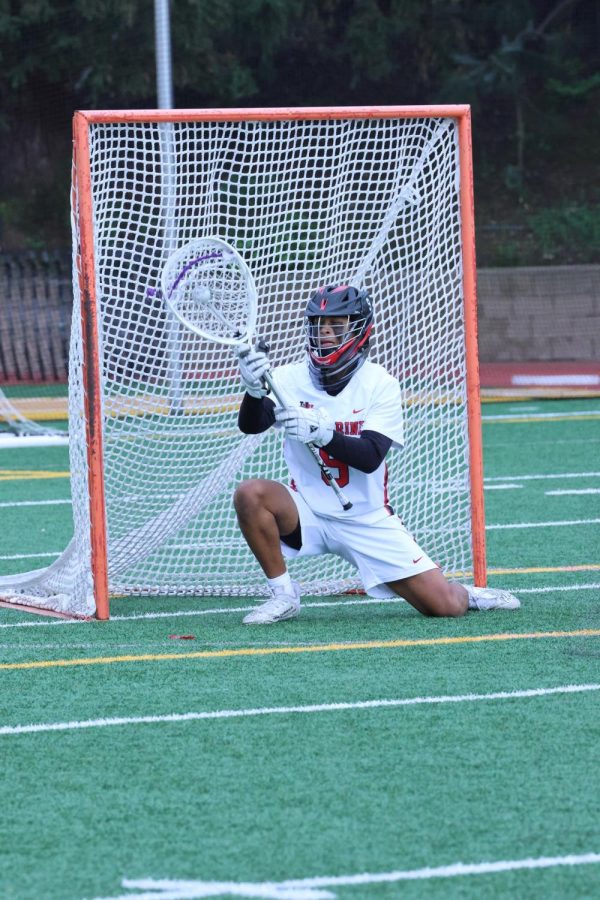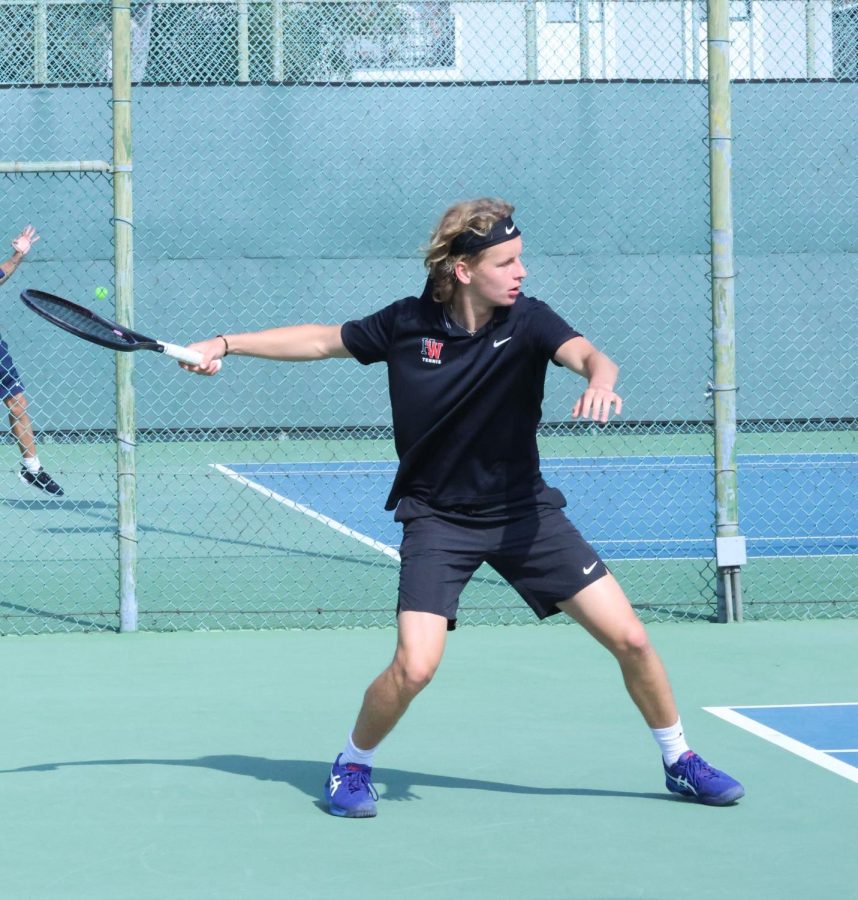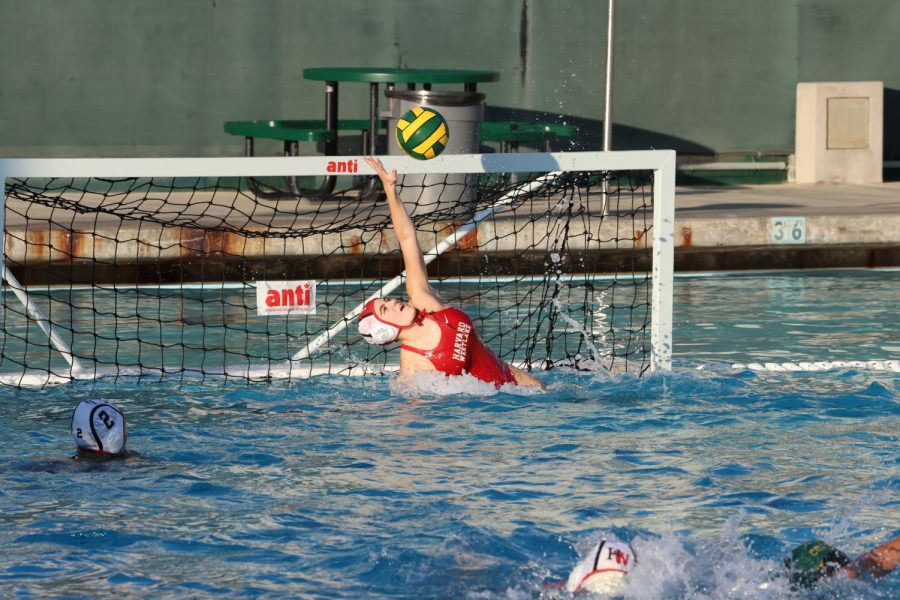Golden trophies line the thin shelves nailed to the wall of the school’s Salle d’armes- French for “armory.” A trash can sits in the middle of the floor, collecting the water dripping from a leak in the roof. The fluorescent lighting inside reflects off of the trophies and the smudged mirror, shedding light on the faces of roughly 20 athletes sitting on the floor and a sofa on the side of the room, idly watching eight of their teammates practice as the minutes tick by.
Harvard-Westlake is famous for its top of the line athletic facilities. A drive into the school parking lot will take you past its earthquake resistant, Olympic-sized stainless steel pool, imported from Italy in 2012. In the distance you can see the AstroTurf football field encircled by a high-end polyurethane track. A ten minute drive takes you to the O’Malley Family Field, a state-of-the-art baseball diamond decked out with a locker room, lounge and a surplus of storage space for equipment. Amazing facilities unmatched by any other high school in the country. But if you asked the average Harvard-Westlake student where the fencing team practices, they probably won’t be able to tell you.
Tucked away behind the Hamilton Gym, the little room shared by drumline and fencing contains only four strips for all of the fencers. That is only four strips for nearly 70 athletes across the foil, saber and epee teams. Not only are there few strips, but they are nine feet shorter than regulation size and are simply spray-painted outlines on the carpeting inside. One strip is designed for two people to spar at a time, leaving roughly 20 students to sit out while their teammates practice.
“Honestly, when eight people are fencing, the rest of the people are just kind of on the side,” epee fencer Warren Wang ’18 said. “The majority of people are doing homework, some of them are waiting for a strip to open and talking to friends or just chatting around. We’ll spend an hour and a half at practice every day, and you end up really fencing for 25 maybe 30 minutes. And there’s warm up and everything, but there’s quite a bit of it that’s just sitting around.”
Along with having less space, the fencing team is also understaffed. While most other teams have on average three or four assistant coaches, Fencing Program Head Ted Katzoff spearheads the program on his own.
“There’s only one coach, and the coach is usually on the strip helping people or trying to give pointers and stuff, so nobody really cares about the other people who are just off to the sides,” Wang said.
However, Katzoff recognizes that the lack of space would make having additional coaches unwieldy.
“When you look at the space, there really isn’t room for an assistant coach. The questions you have to ask are who are they going to work with? Can we do two things at the same time? And we just can’t, and so the room itself prevents a larger staff,” Katzoff said. “If I had a space like Hamilton Gym and everyone practiced there, at that point an assistant coach or maybe two in a single space would make more sense.”
Along with the fact that the cramped space doesn’t allow for multiple coaches, there are a host of other disadvantages that come with the lack of space, Katzoff says.
“Well, the exact limitations of the space are that one, there are only four lanes. Two, it makes it very difficult to do more than one activity at a time. If I had a room near the size of Hamilton Gym, I would be able to have a drill going on, some kids fencing, some kids on strips and that could all happen at the same time,” Katzoff said. “Another thing is that I cannot meet the whole team all at once, I only meet two weapons at a time, and even then the space isn’t adequate enough for that. So the space prevents me from doing some of the things I’d love to do and things I’d have them do, just because there’s not enough room.”
Despite the disadvantages, Katzoff says that he appreciates that the school provides a space for fencing that most schools are unable to, and believes there are positives to the space itself.
“The facility is very small, but it is ours and there are some advantages,” Katzoff said. “For one, it’s indoors. We also have plenty of storage space, which is great. The main thing that is both wonderful and a problem is that the numbers have grown quite a bit, lots of people are interested in fencing and want to get that experience, but I’m very happy we do have a space to provide that, and I’m very grateful to the school for being so supportive of the program throughout the time I’ve been here.”
Saber specialist William Chow ‘17 expressed that he felt the program as a whole would benefit immensely from a more spacious facility.
“Every day in practice, I look around the room and see my teammates waiting eagerly to get back on the strip. There’s so much potential, and so much more we could accomplish,” Chow said. “If we were given the space, I’m sure we would all be able to take our skills to the next level and take the fencing world by storm, but instead, we sit on the floor for one hour out of the three hours of practice we have per week. Also, the room is so cramped, and the strips are so close together, that you can actually get hit by someone fencing on another strip.”
Despite all the barriers in its way, the fencing team has performed well during Katzoff’s 37 years as head coach. Although there is no California Interscholastic Federation (CIF) sanctioned fencing league, the team has been competing in the Southern California Scholastic Fencing League with other independent and public schools for the past 24 years. During that time, the Wolverines took the league title 11 times and amassed an impressive array of individual and team awards, evidenced by the rows of trophies lining the wall and crammed in the closet.
Aside from pure competition, Katzoff seeks to provide a unique platform for students who might not be naturally inclined to try traditional team sports, or for students who want to further their own fencing career.
“When I started the program I wanted to create an experience that kids might not usually get. It’s an opportunity for kids who are already involved in fencing to continue with that in school and to represent their school,” Katzoff said. “It’s an opportunity for some students who would never look at themselves as being an athlete or being involved in traditional sports. It’s an opportunity to learn a sport and participate in competition. Team sports are not necessarily perfect for everyone, so this provides that.”
Despite the commendable strides the fencing team has made, many athletes who practice at club programs tend to perform better than athletes who don’t, and many of the team members believe that the small space plays into that. Captain of the foil team Dylan Faulcon ’18, who currently fences at a club outside of school, believes that his extra practice gives him an edge in competition.
“I do fence outside of school and I think that fencing at a club does give athletes an advantage because they normally will get to fence a lot more at their club than the average athlete who just fences at school,” Faulcon said. “At my club for example, up to 16 fencers can fence at one time in comparison to our school fencing room where only eight fencers can fence using the electronic scoring systems at a time.”
Not only do the clubs provide more space, but because of the increase in numbers, Faulcon believes that adequate equipment has become an issue as well.
“Also, fencers who go to club usually have their own equipment whereas the majority of our athletes borrow equipment from the school for competitions,” Faulcon said. “This year we saw a sharp increase in the team’s roster size and as a result we have recently run out of working equipment for all of our athletes who need it.”
In the past few years, the team’s numbers have risen dramatically, and while Katzoff describes this as both wonderful and a problem, many of the athletes feel some of the negative impacts.
“Even though bouts are fairly short, there are so many people that even when you rotate constantly you have to wait several minutes to fence again,” Elly Hong ’17, who has been fencing epee for four years said. “There are four strips in the fencing room and up to twenty people at each practice, so it’s quite possible that less than half of the team is fencing at one time. This year’s team is particularly large, which makes this even more difficult.”
Faulcon and his teammates believe that the recent success and the caliber at which many of the athletes are competing at warrants an upgrade, especially when the facilities are compared to those of other sports.
“I couldn’t call myself a good team captain if I didn’t point out that the fencing team has a lot of very accomplished athletes, some of whom are nationally ranked and rated and compete internationally,” Faulcon said. “The team consistently brings home some form of a championship victory each year, and so I think that because of our success and the prestige we bring to the school every year that it is warranted for us to have adequate equipment for us to practice. This is Harvard-Westlake, and when you think of Harvard-Westlake you think “the best” because that’s what we’re taught to strive for here. I’m not saying we need Olympic caliber facilities and gear, but I think the team has demonstrated we deserve adequate practicing space and equipment.”
Packed as tightly as they are, the shelves still aren’t large enough to fit all of the awards the team has accumulated.
Many of the accolades are tucked away in the back closet of the fencing room, tucked away in the back of the senior parking lot.
Perhaps the ones sitting there, idly watching their fellow trophies stand proudly, are the ones that could shine the brightest, but the small, weight-strained shelves may never display them for the world to see.



































